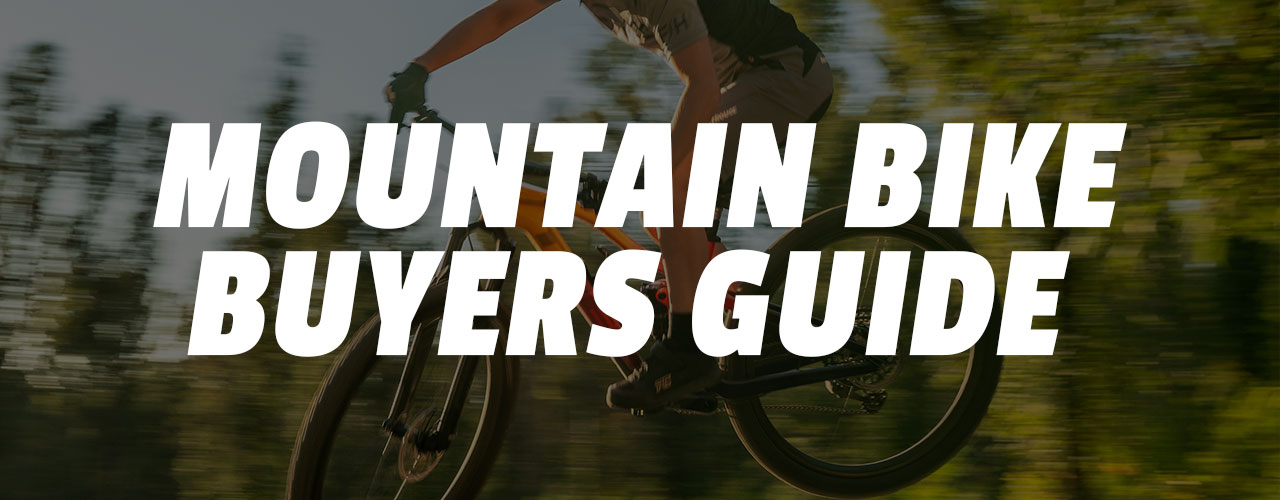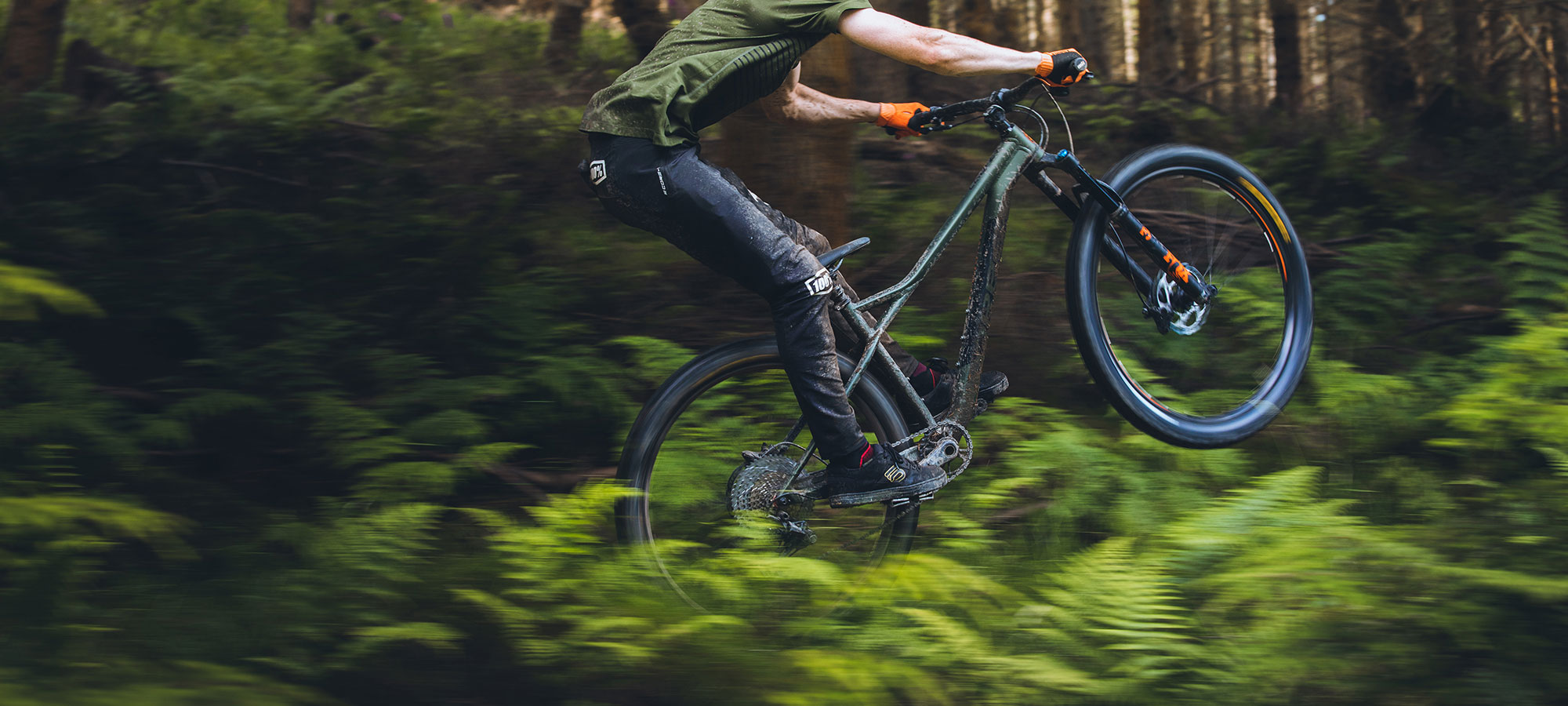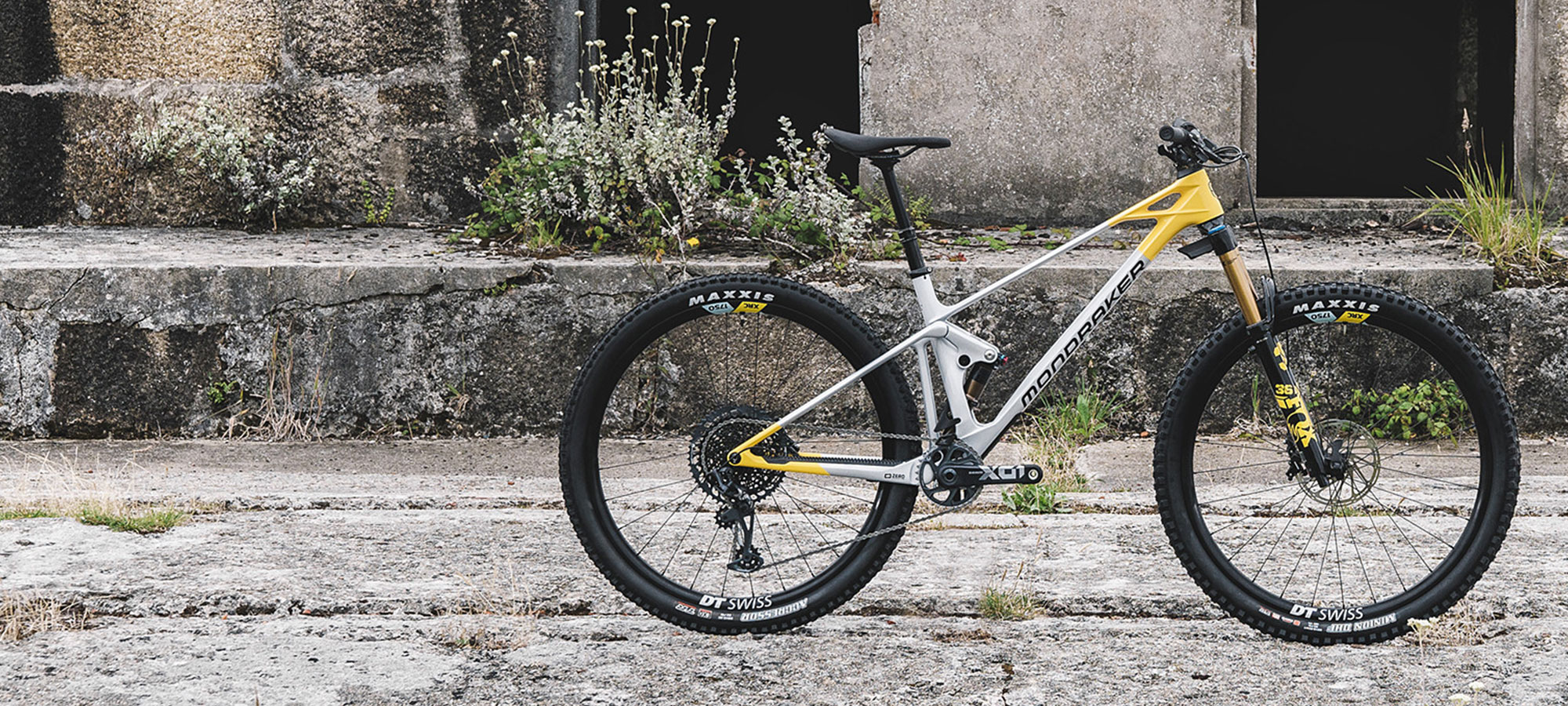
Mountain Bikes are tough and versatile machines which are designed to take challenging terrain in their stride. There's a vast array of Mountain Bikes available from beginner-friendly builds to more specialised models that are equipped with cutting edge technology.
The type of Mountain Bike you choose will depend on the type of riding you do, the terrain you ride and the budget you have. Full Suspension bikes feature a shock at the back and fork up front with various amounts of travel in order to tackle the toughest of trails. Hardtail bikes exchange the rear shock for a rigid frame. They typically use front suspension for some comfort while some race focused hardtails have rigid forks.
Hardtail Mountain Bikes

There are many different types of front suspension bikes, some designed as all-rounders and others to cater for specific disciplines. Geometry, strength, suspension travel and components will vary according to what type of riding the bike is intended for, while different frame materials suit rider preferences or the particular demands of a certain branch of the sport. Most budget and mid-range hardtail MTBs will feature a lightweight aluminium frame. Top-end bikes typically use lightweight carbon fibre, while many bike makers also offer steel or titanium frames that appeal to a wide range of riders.
From superlight short-travel cross-country (XC) race rigs to rough, tough dirt and street machines, from beginner-friendly budget bikes to the latest generation of long-travel trail machines: there’s a hardtail to suit every riding style and every budget.
Click Here to shop for Front Suspension Mountain Bikes
Full Suspension Mountain Bikes

The full-suspension bike has some obvious advantages over the hardtail, with the best of modern suspension designs also virtually eliminating any disadvantages with regard to weight or pedalling efficiency. Because the extra suspension absorbs more of trail obstacles encountered when riding over typical off-road terrain, the bike can typically go faster, with the back end smoothly sucking up the hits rather than being kicked around. The extra cushioning of rear suspension can also offer increased comfort on long-cross country rides, especially helping to minimize lower back and knee pain.
Full suspension bikes towards the budget end of the range can be heavier than similarly-equipped hardtails, due to the shock, pivots and linkages that the frame must carry. This may be detrimental if much of your riding is done on smooth trails or even on tarmac, where the advantages of having rear suspension are outweighed by the smooth and energy-efficient power delivery of the hardtail.
While hardtails may usually be the lighter option, the advantages of an active rear end make it worth a weight penalty on more challenging trails. Rear suspension can offer more speed through the rougher downhill sections and more confidence when tackling ‘bigger’ terrain including the drops, jumps and rock gardens found on most trail centre black runs, but will also work hard to provide extra traction on technical climbs where many a hardtail would ‘spin out’, losing essential rear-wheel grip.
Click Here to Shop for Full Suspension Mountain Bikes


